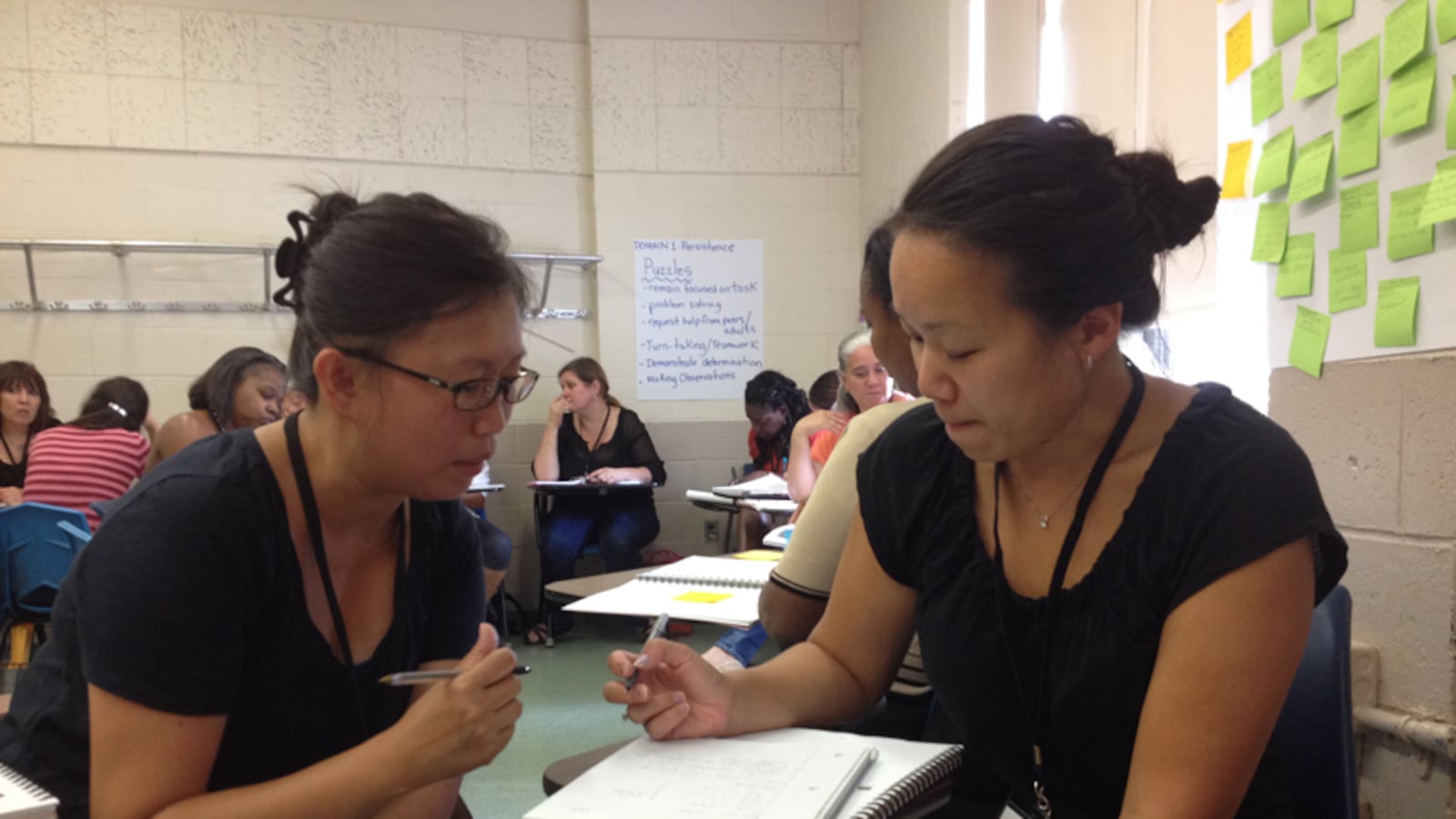Do student teachers learn more when they’re mentored by especially effective teachers?
The answer may seem obvious, but there’s been little research confirming as much. Until now.
Three studies released this year offer real evidence that good teaching can be passed down, in a sense, from mentor teacher to student teacher. In several cases, they find that the performance of the student teachers once they have their own full-time classrooms corresponds to the quality of the teacher they trained under.
And as many teacher preparation programs face pressure to improve, the findings offer a common-sense prescription: invest in finding the most effective possible teachers to supervise their trainees.
“Taken together, the point is that teachers who are … effective appear to be very promising mentors,” said Matt Ronfeldt, a University of Michigan professor who co-authored all three papers.
One of the studies, published last month in the peer-reviewed journal Educational Researcher, examined thousands of student teachers between 2010 and 2015 who were subsequently hired by a Tennessee public school. (Getting the data to understand this was a multi-year undertaking, since there isn’t a centralized system connecting mentors with their student teachers.)
It found that teachers tended to be better at raising students’ test scores if their supervising teacher was better than average, too. Similarly, new teachers scored better on classroom observation rubrics when they had been mentored by a teacher who also scored well on that same rubric.
There was no evidence that teachers with more years of experience, all else equal, were more effective as supervisors.
The researchers can’t definitively prove cause and effect, but the results suggest that the mentor teachers are imparting certain specific skills to their student teachers.
The effect was small, though: Having a supervising teacher who did particularly well on their observations or their test scores was comparable to about half the performance leap teachers make between their first and second years in the classroom. That’s not a huge difference, but research has found teachers make their steepest improvement in those years.
A similar study, released in January, focused on about 300 student teachers in Chicago Public Schools who were subsequently hired in the district. Again, the student teachers who had better mentor teachers, as measured by classroom observations, ended up with better observation scores themselves.
Here too, there was no clear benefit of having a more experienced supervisor.
A separate paper, published in April through the research organization CALDER, looked at a single teacher prep program, Tennessee Tech University, which allowed researchers to conduct an experiment with its student teacher placements.
After all of the supervising teachers and schools had been selected, researchers divided them into two categories: those likely to be effective mentors and those less likely to be. This was based on data on the teachers (their performance and years of experience) and the schools (staff retention numbers and student achievement growth). From there, the nearly 200 teachers were randomly assigned, allowing the researchers to conclusively determine whether being in that high-quality group mattered.
It did. The student teachers with better placements reported that their mentor teachers were better instructors, offered more frequent and better coaching, and provided more opportunities for them to practice. This analysis didn’t track the student teachers’ later performance, but they did report that they felt more prepared to teach themselves and to manage their future classrooms.
This study, the researchers conclude, “would make a strong case to school systems that the quality of placements is fundamental to the development of new teachers.”
The set of studies add to a small but growing body of research on the best ways to set teachers up for success. Previous research had linked higher-functioning placement schools to better results for student teachers. Teachers also seem to do better after having student taught at a school with similar demographics as the school where they go on to teach. And concerns that adding a student teacher to a classroom hurts students (by allowing an untrained teacher to take over for a high-performing one) seem mostly unfounded.
The latest findings aren’t especially surprising, but to Ronfeldt they’re still important.
“While that may be a ‘duh’ moment, the reality is that there [are] often assumptions like this in education, and I think having the research evidence to back it up is critical,” he said, pointing out that few states have requirements that mentor teachers have strong evaluation scores. “We can make all sorts of assumptions, as I have for other things, and find out the opposite.”
Want to read more about efforts to improve teacher preparation? See Chalkbeat stories on teacher residencies, a Texas program known as UTeach, the challenges of identifying successful programs, a teacher training program that has embraced “personalized learning,” Denver’s effort to ease the transition into the classroom, and New York City and Memphis programs to recruit more men of color into teaching.


